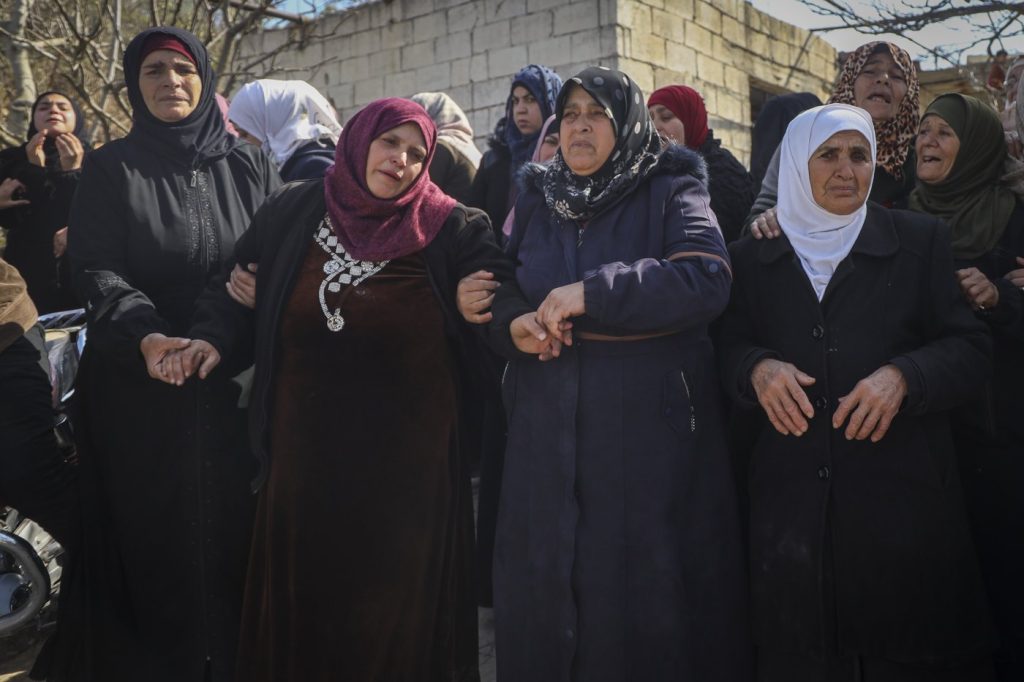BEIRUT (AP) — The violence in Syria escalated dramatically over the weekend, with the death toll from two days of clashes between security forces and loyalists of ousted President Bashar Assad surpassing 600. This alarming figure highlights one of the deadliest episodes in the 14-year-long Syrian conflict, according to a war monitoring group. The clashes, which erupted on Thursday, signal a significant challenge to the new government in Damascus, which has only been in place for three months following the ousting of Assad.
The government claims it was responding to attacks from remnants of Assad's forces and attributes the extensive violence to "individual actions." However, the aftermath has revealed a brutal series of revenge killings that began on Friday, driven by Sunni Muslim gunmen loyal to the new government targeting members of Assad's minority Alawite sect. This escalation marks a severe blow to Hayat Tahrir al-Sham, the faction responsible for Assad's removal from power, as Alawites have historically constituted a substantial part of Assad’s support base.
Residents from impacted Alawite towns and villages described horrific scenes to the Associated Press, revealing a pattern of killings where gunmen shot Alawite men in the streets or at their homes. Many Alawite residences were looted and subsequently set ablaze. Reports indicate that thousands of individuals have fled their homes, seeking refuge in nearby mountainous regions. In Baniyas, a town severely affected by the violence, residents reported that bodies littered the streets, with many victims left unburied as local authorities were overwhelmed, unable to recover the deceased due to ongoing gunfire.
Ali Sheha, a local resident who fled with family and neighbors, recounted the chaos he witnessed, stating that at least 20 of his neighbors were killed in their homes or shops. He characterized the attacks as "revenge killings" against the Alawite minority, attributing the aggression to long-standing grievances stemming from the actions of Assad's government. Witnesses noted the involvement of foreign fighters and militants from surrounding areas in the violence, further complicating the situation.
The Syrian Observatory for Human Rights reported that 428 Alawites, alongside 120 pro-Assad fighters and 89 security personnel, have died as a result of these attacks. Rami Abdurrahman, the Observatory's chief, labeled the incident as one of the largest massacres of civilians witnessed during the Syrian conflict. The previous death toll had been reported as over 200, indicating a staggering rise in fatalities. Although officials have yet to provide casualty figures, funerals for the deceased have already begun, with a notable ceremony held for four security force members killed during the clashes.
According to Syria’s state news agency, government forces have managed to reclaim control over significant areas from Assad loyalists, leading to the closure of all roads to the coastal region in an effort to restore stability. Meanwhile, the bodies of 31 individuals who were killed in revenge attacks were buried in a mass grave, further illustrating the scale of the tragedy, including the deaths of nine children and four women.
Haidar Nasser, a Lebanese legislator representing the Alawite sect in parliament, reported that many people are fleeing to Lebanon for safety. He emphasized the dire need for international protection of Alawites who remain loyal to their country, noting that since Assad's ouster, many Alawites have faced unemployment and violence, including the deaths of former soldiers who sought reconciliation with the new authorities.
The most recent wave of violence was triggered when government forces attempted to detain a wanted individual near the coastal city of Jableh, ultimately leading to an ambush by Assad’s loyalists. This alarming trajectory indicates a continued cycle of vengeance in a country still grappling with the profound repercussions of a prolonged and brutal conflict.










